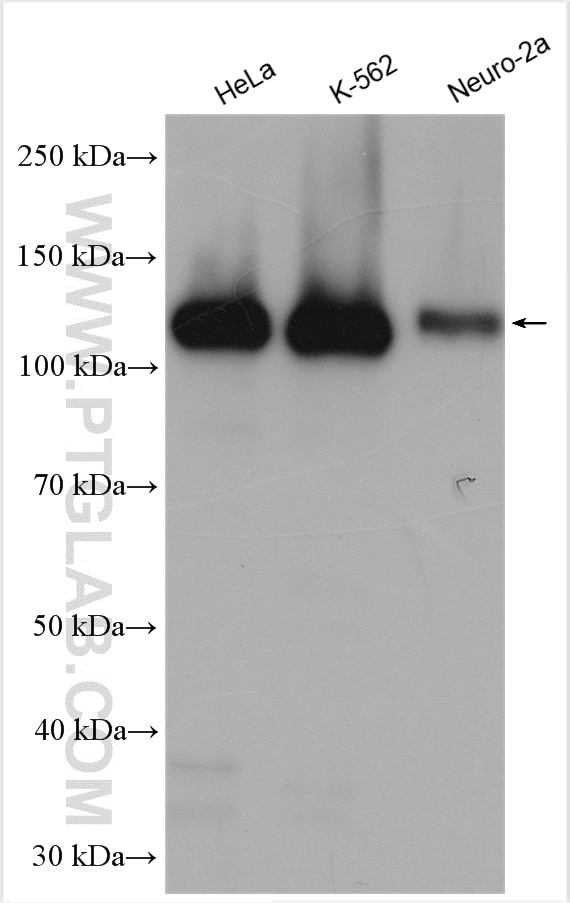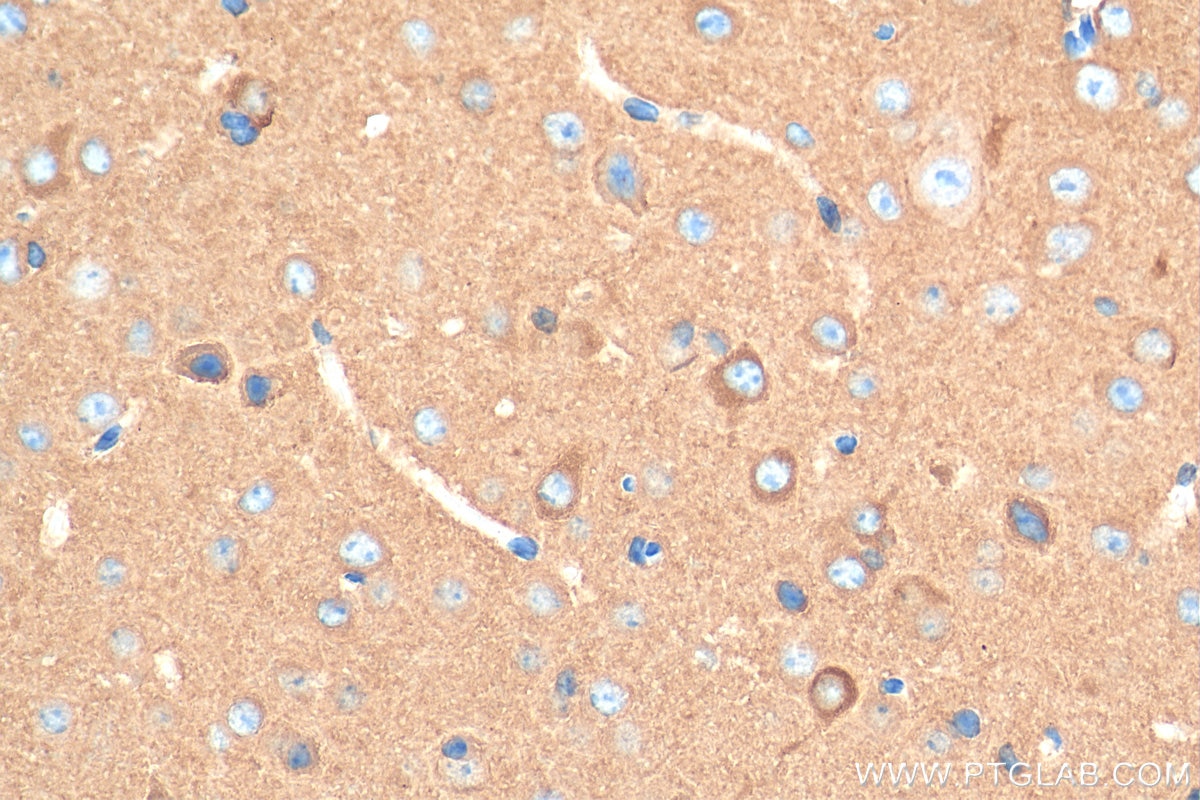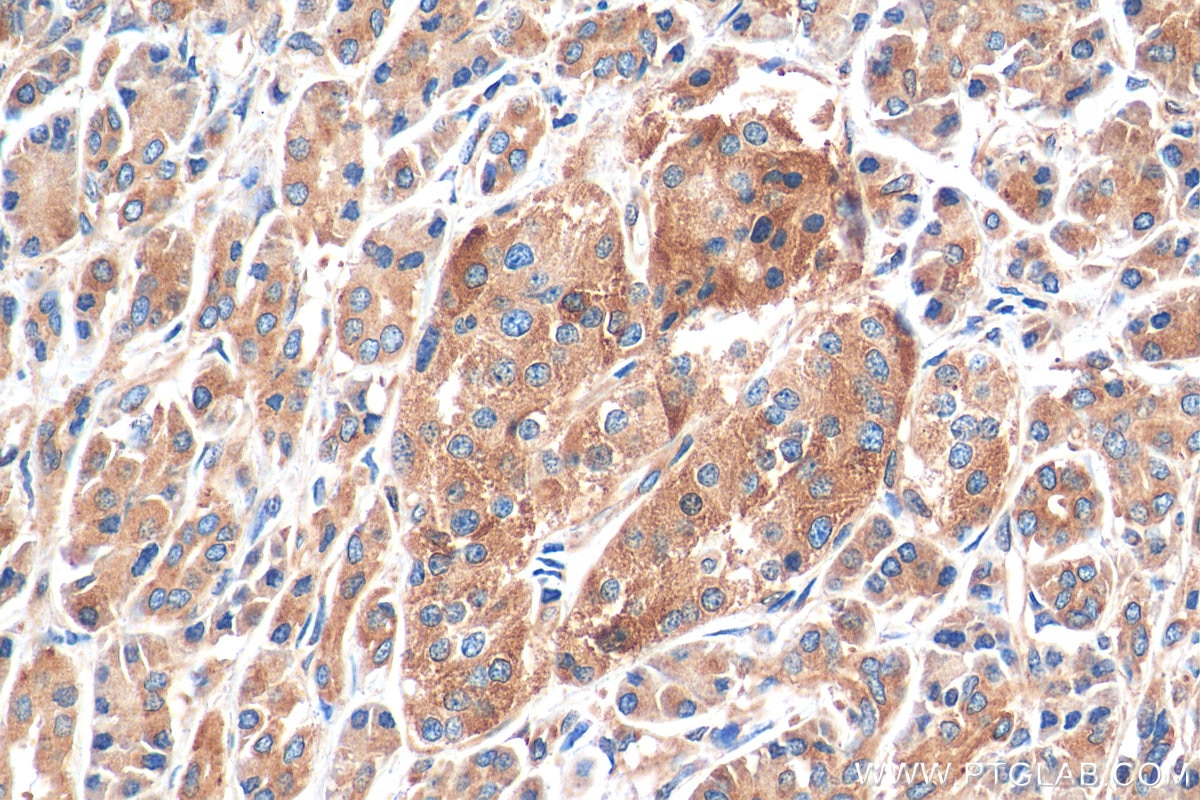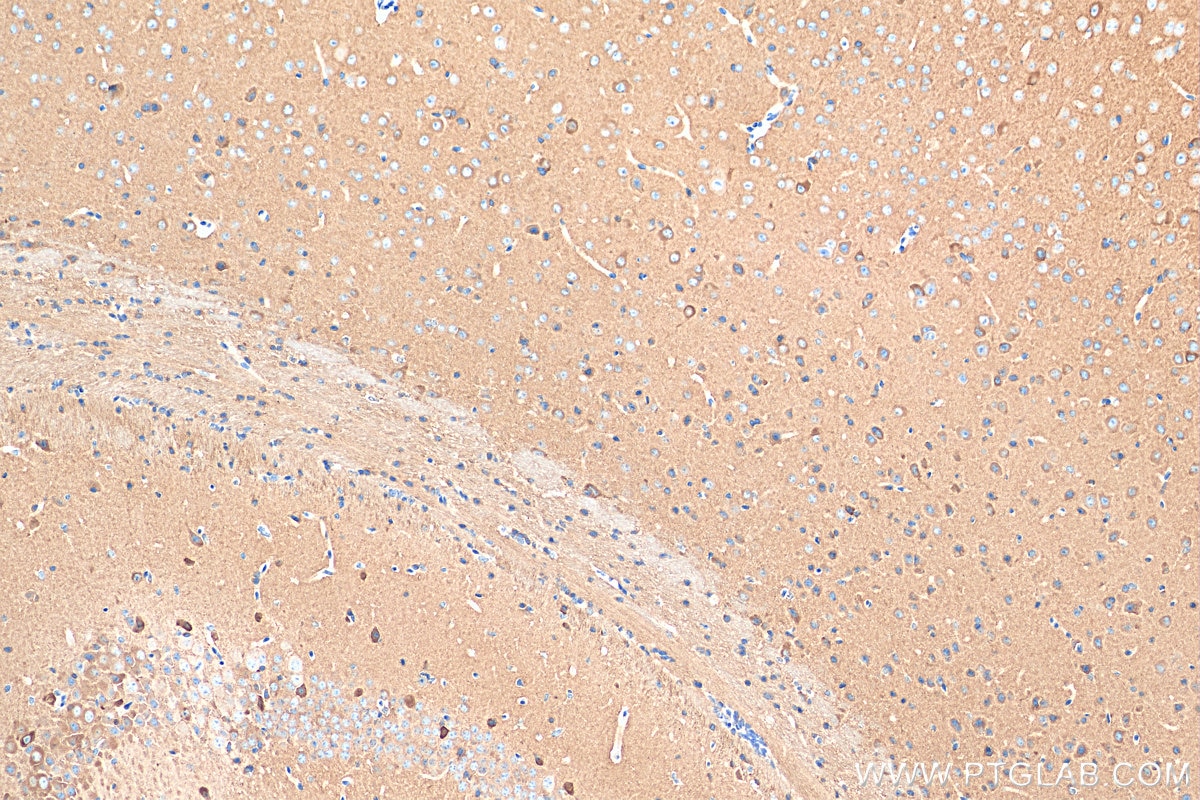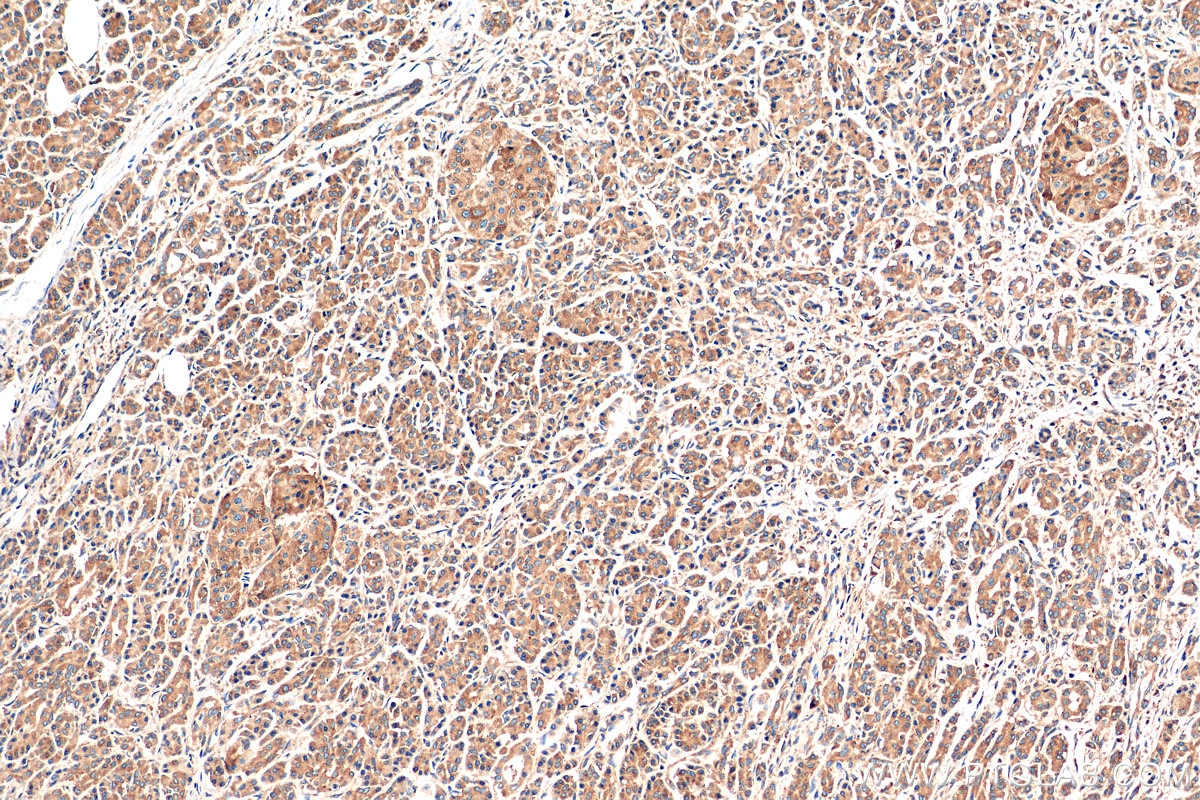OXR1 Polyclonal antibody
OXR1 Polyclonal Antibody for WB, IHC, ELISA
Host / Isotype
Rabbit / IgG
Reactivity
human, mouse and More (1)
Applications
WB, IF, IHC, ELISA
Conjugate
Unconjugated
Cat no : 13514-1-AP
Synonyms
Validation Data Gallery
Tested Applications
| Positive WB detected in | HeLa cells, K-562 cells, Neuro-2a cells |
| Positive IHC detected in | human pancreas cancer tissue, mouse brain tissue Note: suggested antigen retrieval with TE buffer pH 9.0; (*) Alternatively, antigen retrieval may be performed with citrate buffer pH 6.0 |
Recommended dilution
| Application | Dilution |
|---|---|
| Western Blot (WB) | WB : 1:2000-1:16000 |
| Immunohistochemistry (IHC) | IHC : 1:50-1:500 |
| It is recommended that this reagent should be titrated in each testing system to obtain optimal results. | |
| Sample-dependent, Check data in validation data gallery. | |
Published Applications
| WB | See 5 publications below |
| IF | See 1 publications below |
Product Information
13514-1-AP targets OXR1 in WB, IF, IHC, ELISA applications and shows reactivity with human, mouse samples.
| Tested Reactivity | human, mouse |
| Cited Reactivity | mouse, rat |
| Host / Isotype | Rabbit / IgG |
| Class | Polyclonal |
| Type | Antibody |
| Immunogen | OXR1 fusion protein Ag4439 |
| Full Name | oxidation resistance 1 |
| Calculated Molecular Weight | 758 aa, 85 kDa |
| Observed Molecular Weight | 120-140 kDa |
| GenBank Accession Number | BC032710 |
| Gene Symbol | OXR1 |
| Gene ID (NCBI) | 55074 |
| RRID | AB_2877956 |
| Conjugate | Unconjugated |
| Form | Liquid |
| Purification Method | Antigen affinity purification |
| Storage Buffer | PBS with 0.02% sodium azide and 50% glycerol pH 7.3. |
| Storage Conditions | Store at -20°C. Stable for one year after shipment. Aliquoting is unnecessary for -20oC storage. 20ul sizes contain 0.1% BSA. |
Background Information
Oxidation resistance protein 1 (OXR1) belongs to the OXR1 family. The major function of OXR1 is to control the expression of genes that alleviate oxidative stress by increasing cellular resistance to reactive oxygen species (ROS) and the stress these molecules cause the cell. OXR1's ability to reduce oxidative stress and neurodegeneration in multiple diseases strongly suggests that it can be an effective therapeutic target (PMID: 33384581).Biochemical experiments show that OXR1 inhibits V1-ATPase and causes disassembly of the holoenzyme, suggesting that OXR1 plays a direct role in V-ATPase regulation (PMID: 34918374). OXR1 has 8 isoforms with the molecular mass of 25, 28, 34, 56, 94, 95 and 98 kDa. Sometimes higher molecular weight around 120-140 kDa can also be observed, which may be a modified variant of OXR1.
Protocols
| Product Specific Protocols | |
|---|---|
| WB protocol for OXR1 antibody 13514-1-AP | Download protocol |
| IHC protocol for OXR1 antibody 13514-1-AP | Download protocol |
| Standard Protocols | |
|---|---|
| Click here to view our Standard Protocols |
Publications
| Species | Application | Title |
|---|---|---|
Cell Mol Life Sci The Ncoa7 locus regulates V-ATPase formation and function, neurodevelopment and behaviour. | ||
J Inflamm Res Orexin-A Attenuates Inflammatory Responses in Lipopolysaccharide-Induced Neural Stem Cells by Regulating NF-KB and Phosphorylation of MAPK/P38/Erk Pathways. | ||
Front Mol Biosci 6-Shogaol Inhibits Oxidative Stress-Induced Rat Vascular Smooth Muscle Cell Apoptosis by Regulating OXR1-p53 Axis. | ||
Brain Res Bull Aerobic training associated with an active lifestyle exerts a protective effect against oxidative damage in hypothalamus and liver: The involvement of energy metabolism. | ||
Redox Biol Iridium metal complex targeting oxidation resistance 1 protein attenuates spinal cord injury by inhibiting oxidative stress-associated reactive oxygen species | ||
Neurosci Bull MicroRNA-365 Knockdown Prevents Ischemic Neuronal Injury by Activating Oxidation Resistance 1-Mediated Antioxidant Signals. |
